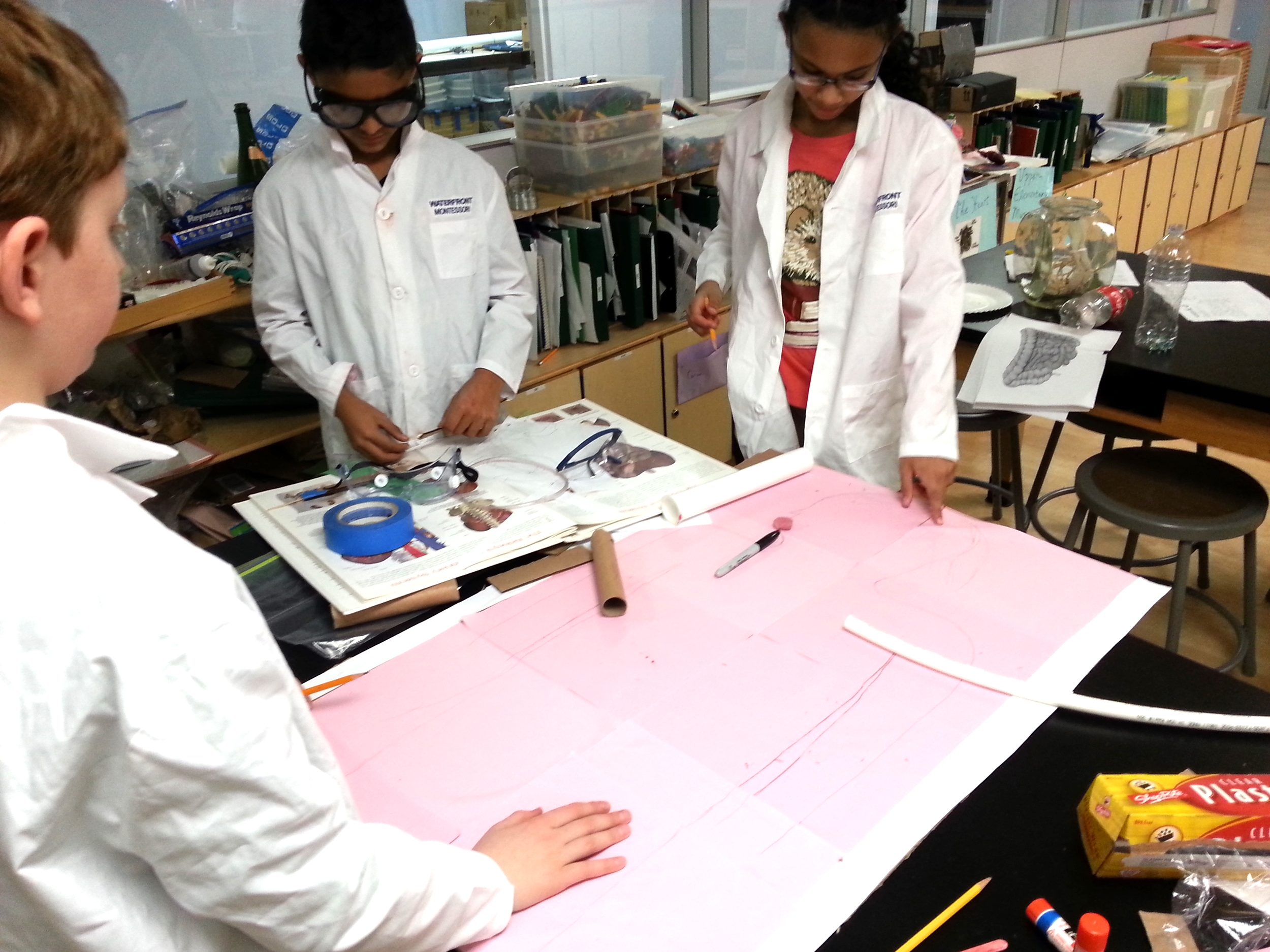Our Montessori Curriculum
The Montessori curriculum is unique. It is both directed and child-centric. It couples structure with free choice. It seeks to provide for each child precisely the environment and tools a child most needs at each stage of a child’s development. It produces children who are centered, self-confident, well-balanced and focused on whatever their interests take them to.
From the day of their birth, children are actively engaged in absorbing everything they can from everything around them. Montessori education simply and unobtrusively takes advantage of and extends this innate drive to learn into the child’s school years. Every part of every program -- whether it is the construction of the classroom, the materials presented, the form in which they are presented, or the choices children are given -- is a product of Montessori’s observation of children and a desire to produce a learning context consistent with their needs.
Structure in Montessori education arises from the structure of the Montessori classroom, which is a prepared environment unlike any other educational environment. It is first and foremost the child’s environment: There is a deliberate absence of any overt adult presence in the classroom, be it furniture, desks, storage or creature comforts. Adults are guests: They bend down to speak to the children at the children’s own level; they sit in child-sized chairs or on the floor; they use mats on which to work; they use the same materials and implements the children use.
Every detail in each classroom is, with careful and rigorous thought, deliberately chosen for the age and developmental level to which it is addressed. Toddler furniture, for instance, is lower to the ground than Preschool furniture, which in turn is smaller than furniture in the Elementary classrooms. Toddler materials are focused on sensory development and gross motor skills. Preschool materials focus on refining fine motor skills and laying the foundation for the academic disciplines. Elementary materials are increasingly academic in nature, consistent with the child’s emerging ability to handle abstract concepts.
Teachers in Montessori classrooms are guides and facilitators, not instructors. Montessori teachers wander among a classroom of children who, although unaware of it, are actively engaged in self-directed learning. Lessons are taught individually or in small groups. Children are allowed to follow their interests and proceed at their own pace; it is the teacher’s job to notice when the child is ready for more and to introduce the next steps to the child at that time. Children are able to take ownership for their learning and skill development, to become excited with every further piece of knowledge and know-how.
In a Montessori classroom, children choose their work. Even as children choose, however, there are built-in limits to their choice: We provide them with an environment in which every choice is a wise choice; they cannot choose to do nothing; and, sometimes their choice must be limited to choosing to put on their right shoe first, or their left, or choosing one math work over another.
The Montessori preschool curriculum introduces the child to writing, reading, arithmetic, science, geography and other academic skills. It helps the child develop auditory, visual and other sensory discrimination. It assists the child to develop practical life skills, encouraging the child to become independent.
The Montessori elementary school curriculum offers the child the opportunity to explore the larger world. It builds on the child’s academic foundation and nurtures the child’s nascent abilities in abstract and critical thinking. It continues to encourage each child’s unique development while fostering the ability to work and learn as a group.
The combined Montessori/IB middle school curriculum builds on the child's academic foundation by extending the prepared environment into the world to allow students to experience the true power of their education and passions. It focuses on the development of critical thinking and communication in all its forms: oral, written, multimedia and online. Students use individual and collaborative problem-solving to develop confidence in their ability to tackle difficult global issues, articulate potential solutions and explore ways to apply their knowledge in the real world.
Our academic curriculum is enriched by the arts because we believe that these are just as important as academic work if children are to discover the full range of their gifts. We offer fine art, music, movement, physical education and foreign languages. These are introduced in their historic and cultural contexts and follow the same path from the concrete to the abstract as the other academic disciplines. We also believe that the earlier these activities are introduced, the more likely the child is to carry the skills and appreciation of them into his or her adult years.
One of the biggest events of each school year is the annual school musical in which all Elementary and Middle School students perform. Work on the musical replaces the classroom curricula for two short weeks as a Practical Life vehicle for students: It replicates the time pressure and stress of studying for an exam, but culminates instead in joyful performances by the students for their families and the community at large.






